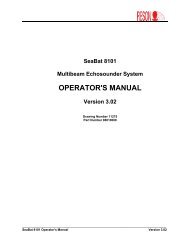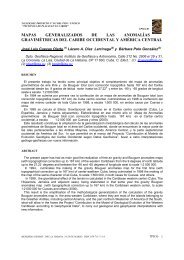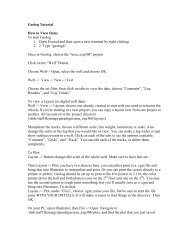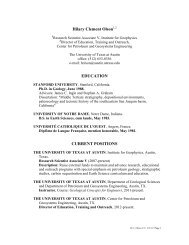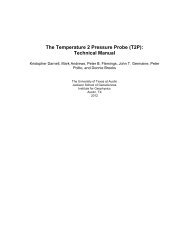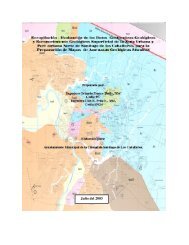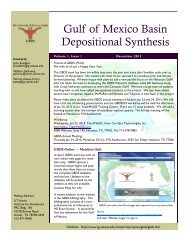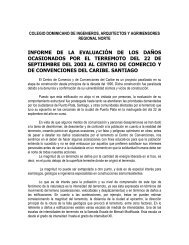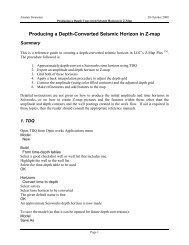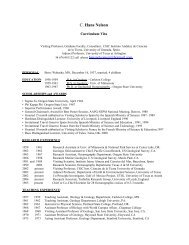IGCP Project short title: Caribbean Plate Tectonics Duration and ...
IGCP Project short title: Caribbean Plate Tectonics Duration and ...
IGCP Project short title: Caribbean Plate Tectonics Duration and ...
You also want an ePaper? Increase the reach of your titles
YUMPU automatically turns print PDFs into web optimized ePapers that Google loves.
20<br />
In the panel discussions that followed the oral presentations, the main issues<br />
centered on the origin of various critical geologic terranes in Cuba such as the Escambray,<br />
Purial, <strong>and</strong> Grenvile metamorphic complexes, whether they are allochthonous or<br />
autochthonous, <strong>and</strong> how they can be integrated into the geologic evolution of the northern<br />
<strong>Caribbean</strong> plate boundary. For example, according to present knowledge, Purial massif is a<br />
vulcano-plutonic "isl<strong>and</strong> arc" complex of Cretaceous age, which is characterized by high Plow<br />
T metamorphism. Nevertheless, the present tectonic position of this complex can hardly<br />
be associated with a subduction zone of any age. A lively discussion was also held on how<br />
the Rosario belt of western Cuba <strong>and</strong> the Placetas belt in central Cuba relate to the<br />
development of the Proto<strong>Caribbean</strong> crust. Usually these belts have been interpreted as the<br />
southern basin-ward deposits of the Bahamas platform, but another interpretation is that they<br />
represent the sediments <strong>and</strong> crust of the Proto<strong>Caribbean</strong>.<br />
Concerning the tectonic position of the Cuban Cretaceous vulcano-plutonic isl<strong>and</strong><br />
arc suites, important unpublished information was presented to the audience, including highresolution<br />
seismic profiles of several areas of Cuba. The issue was to evaluate if the isl<strong>and</strong><br />
arc suite is allochthonous above the Escambray, with the roots located south of the<br />
Escambray; or if the isl<strong>and</strong> arc suite is allochthonous above the northern ophiolites <strong>and</strong><br />
Placetas-Rosario belts, then the Escambray is an allochthonous terrain located within the<br />
north diping subduction zone of the arc. Seismic data favour the second possibility, but the<br />
issue require more research.<br />
After more than 5 hours of very often high-tuned discussions, many agree that there<br />
are some areas (call them terrains, belts or masifs) which are yet too poorly known as to be<br />
interpreted in a single easy manner, as it is currently assumed by some <strong>Caribbean</strong> plate<br />
tectonic models. More field <strong>and</strong> laboratory research focused on the petrology <strong>and</strong> internal<br />
structure of the Socorro (Grenvile), Escambray, Purial <strong>and</strong> Pinos metamorphic complexes, as<br />
well as on the stratigraphy <strong>and</strong> tectonic position of the Placetas <strong>and</strong> Rosario belts is urgently<br />
required before a fair interpretation of the origin of these geologic units can be reach.<br />
Available P-t path studies, isotopic dating <strong>and</strong> geochemical data for the Escambray <strong>and</strong><br />
Purial are still insufficient. Fortunately, several attendees to the meeting already agreed to<br />
work on some of these areas, <strong>and</strong> this is probably one of the most important results of the<br />
panel workshop.<br />
WORKSHOP ON THE GEOCHEMISTRY OF THE CARIBBEAN PLATEAU AND<br />
CRETACEOUS ISLAND ARC TERRANES, AND THEIR IMPLICATIONS FOR THE<br />
GEODYNAMICS OF THE CARIBBEAN<br />
Leicester, U.K., April 23-24, 2001<br />
Convener: P.M.E. Thompson<br />
20



